10 Most Famous Black and White Paintings
-
Famous Black and White Paintings
- 1. Guernica – Pablo Picasso
- 2. Morning Glory with Black – Georgia O’Keeffe
- 3. Untitled (Black on Gray) 1969 – Mark Rothko
- 4. Chief – Franz Kline
- 5. Cart with Black Ox – Van Gogh
- 6. Black Square – Kazimir Malevich
- 7. The Charnel House – Pablo Picasso
- 8. Movement in Squares – Bridget Riley
- 9. Zebra – Victor Vasarely
- 10. Horse Skull With White Rose 1931 – Georgia O’Keeffe
Art has always reflected the emotions and thoughts ripple through the human psyche. Across history, artists have delved into diverse palettes to represent their artistic musings. Yet, among these myriad colors, the monochrome palette of black and white stands out with a distinguished grace. This simplicity, however, carries with it a profundity that has resonated through the annals of art history.
Within the simplistic shades of black and white lies a spectrum of emotions, interpretations, and tales that transcend generations. While society often perceives white as the beacon of hope, clarity, and virtue, black is conversely seen as the enigmatic shadow, the profound depth, or sometimes the silent void. Yet, the beauty of art lies in its ability to challenge and redefine these conventions. With their unparalleled creativity, artists have frequently blurred these lines, making black the hero of their canvases or presenting white in an intriguingly cryptic light.
Join us on a captivating odyssey as we delve into ten iconic black-and-white masterpieces. As we journey through each painting, we'll attempt to grasp its essence, appreciate the nuances introduced by the artists, and immerse ourselves in the timeless stories encapsulated within their monochromatic magic.
Famous Black and White Paintings
1. Guernica – Pablo Picasso

"Guernica" – Pablo Picasso
When you hear the name Pablo Picasso, a rush of vivid artworks might flood your mind. Among them, "Guernica" stands out, not just as a painting, but as a raw emotional outcry. Drenched in stark black and white, it unveils the brutality of the Nazi bombings just as the world was teetering on the brink of World War II. Picasso's choice to forgo color seems to amplify the piece's intensity, letting the anguish and terror seep directly into our souls.
The image of a distraught mother clutching her lifeless child, a horse caught in a whirlwind of panic, and the general maelstrom of despair coalesce to craft an indelible statement on war's cruel face. Every brushstroke in "Guernica" echoes the painful cries of the innocent, urging us never to forget the heavy toll of conflict.
2. Morning Glory with Black – Georgia O’Keeffe
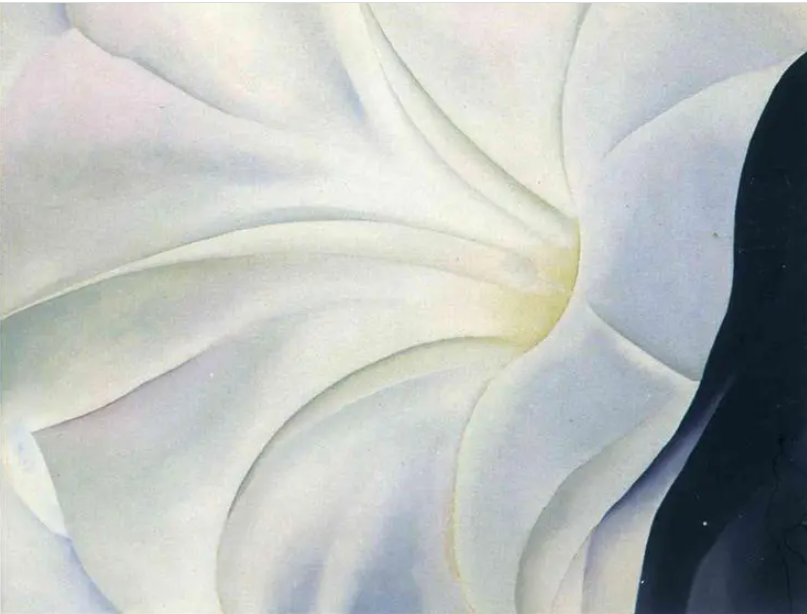
"Morning Glory With Black" – Georgia O’keeffe
The art realm speaks of Georgia O'Keeffe with a sense of reverence, especially for her uncanny ability to breathe life into the minutiae of nature. "Morning Glory with Black," a gem from 1926, showcases O'Keeffe's genius in all its glory. Even in the stark absence of colors, the painting vibrates with life, presenting every delicate detail of the morning glory.
This ephemeral flower, which graces the world with its beauty only at dawn, becomes a metaphor for life's fleeting moments under O'Keeffe's brushstroke. Her portrayal isn't just a testament to her artistic skill but also a poignant reflection on the transient nature of beauty and time. Through this exquisite piece, O'Keeffe invites us to cherish the temporary wonders that, although brief, leave an indelible mark on our souls.
3. Untitled (Black on Gray) 1969 – Mark Rothko
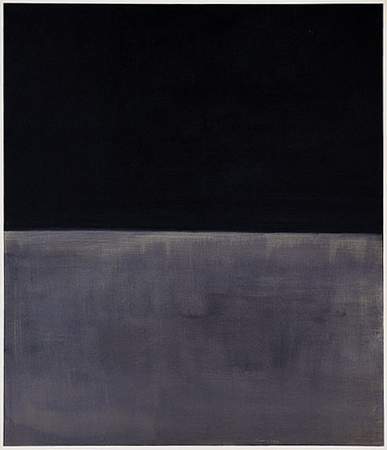
"Black On Gray" 1969 – Mark Rothko
Mark Rothko, an illustrious figure in the abstract art domain, possessed a unique flair for expressing profound emotions through seemingly simple designs. "Untitled (Black on Gray)" perfectly reflects this talent. At first glance, it presents a black rectangle set against a progressively fading gray canvas. However, this minimalistic approach encourages the viewer to delve deeper, searching for hidden meanings and evoked emotions.
The delicate interplay between the stark black and the receding gray can stir introspective thoughts and feelings in the beholder. Rothko's genius lies in creating such an evocative experience from a pared-down monochromatic palette, reinforcing the piece's status as a monochrome magnum opus.
4. Chief – Franz Kline

Franz Kline "Chief" 1950
The realm of 20th-century abstract art was punctuated by pioneers, with Franz Kline emerging as a trailblazer. His 1950 artwork, "Chief," stands as a luminous beacon of his experimental spirit. Through masterful brushwork, Kline demonstrates the harmonious yet dynamic relationship between black and white, crafting an arresting visual panorama that pulls the viewer into its depths.
Far from leaving the canvas untouched for the white portions, Kline's deliberate decision to paint both hues showcases his technical prowess and a profound understanding of the expressive power of color – or, in this case, its absence. In "Chief," Kline encapsulates the essence of abstract expressionism, emphasizing the emotion and movement inherent in every brushstroke.
5. Cart with Black Ox – Van Gogh
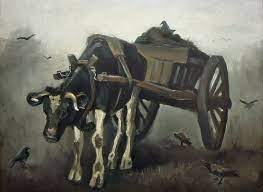
"Cart With A Black Bull" - Van Gogh 1884
Vincent Van Gogh, renowned for his vibrant swirls of color, took a markedly different approach with "Cart with Black Ox." This 1884 painting reveals a side of Van Gogh where he masterfully wields a monochromatic palette to evoke profound emotions. The solitary ox, juxtaposed against an austere backdrop, becomes an emblem of the loneliness and strenuous labor typical of the era.
The deep blacks and contrasting whites not only capture the physical bleakness but also resonate with the emotional struggles of the time. In this masterpiece, Van Gogh beautifully demonstrates that the absence of color can be as powerful in storytelling as a canvas with hues.
6. Black Square – Kazimir Malevich
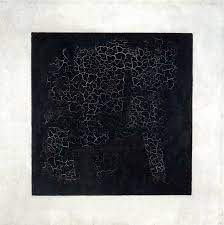
Kazimir Malevich's "Black Square" 1915
Kazimir Malevich's "Black Square" from 1915 is an abstract enigma that challenges the viewer to look beyond the superficial. While it ostensibly presents just a plain black square, it's a daring departure from traditional artistic representations, echoing deep philosophical undertones.
In the midst of Russia's evolving art scene, this piece boldly heralded the advent of Suprematism—a movement emphasizing basic geometric forms and a limited palette. Malevich's masterpiece isn't just a visual experience; it's a cerebral one.
In its stark simplicity, the painting serves as a canvas for reflection, pushing boundaries, and questioning our understanding of art and its purpose.
7. The Charnel House – Pablo Picasso
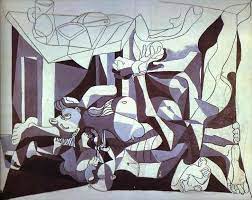
"The Charnel House" – Pablo Picasso 1884
Vincent Van Gogh's "Cart with Black Ox" is a haunting reflection on solitude and the stark realities of life. Venturing beyond his characteristic vibrancy, Van Gogh taps into the power of monochrome to portray a lone ox in a bleak landscape.
Painted in 1884, this artwork eloquently encapsulates the melancholic spirit and challenges of the era. The somber tones, coupled with the ox's isolated stance, resonate with the feelings of desolation and introspection, offering viewers a poignant insight into the weighty themes of loneliness, hardship, and the inexorable passage of time.
8. Movement in Squares – Bridget Riley

"Movement In Squares" - Bridget Riley
Mark Rothko, a titan in the realm of abstract expressionism, had an uncanny ability to convey profound emotions with deceptively simple designs.
"Untitled (Black on Gray)" is a sterling representation of this gift. Here, a somber black rectangle stretches across a gradually lightening gray canvas. In its simplicity, the interplay of these two shades creates a space for introspection and emotional resonance. For some, the fading gray might evoke a sense of hope or dawn breaking, while for others, the enveloping black could hint at depth, mystery, or even sorrow.
Rothko's genius lies in his ability to spark diverse emotions and interpretations with such minimalistic compositions, making "Untitled (Black on Gray)" an iconic piece in monochromatic artistry.
9. Zebra – Victor Vasarely
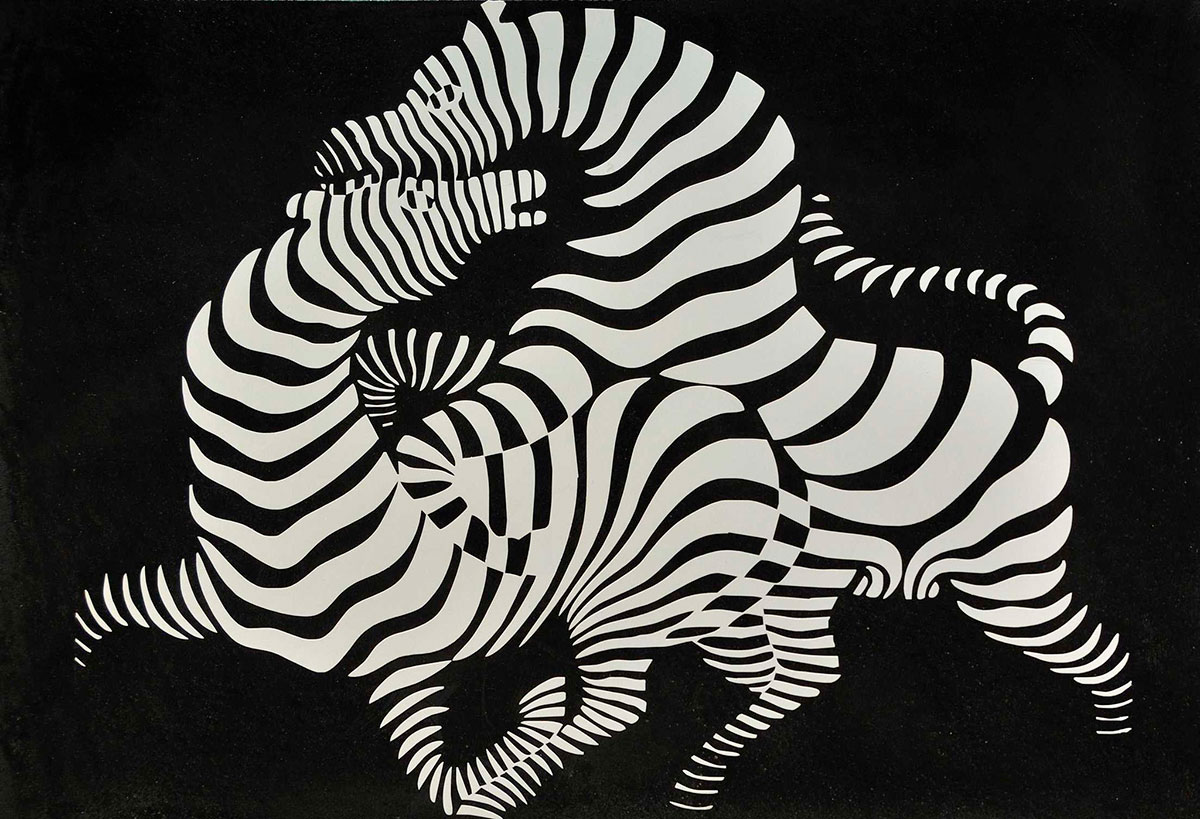
"Zebra" – Victor Vasarely 1937
Vasarely's "Zebra" is a playful and early dalliance into optical illusion art. Painted in 1937, this artwork ingeniously utilizes the natural patterns of zebras, pushing boundaries of perception. The 1965 version, reversing the stripe colors, further showcases Vasarely's prowess and his pivotal role in the optical art movement.
10. Horse Skull With White Rose 1931 – Georgia O’Keeffe

"Horse Skull With White Rose" 1931 – Georgia O’keeffe
Venturing back to O’Keeffe, her depiction of a horse skull intertwined with a white rose is both haunting and beautiful. A foray into the realms of life and death, the artwork's monochrome palette amplifies the fragile balance of existence. It's a powerful conclusion to our exploration, encapsulating the sheer depth and range that black and white artworks can achieve.
As we've journeyed through these iconic artworks, it becomes evident that the absence of color doesn't diminish the artwork's potency. Instead, black and white paintings often challenge the viewer, stirring deep emotions and thoughts, making them timeless masterpieces in the ever-evolving art world.
No Comments Yet...